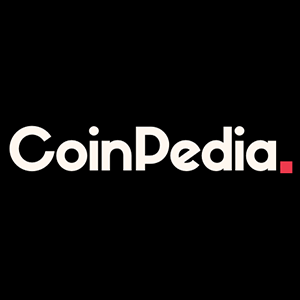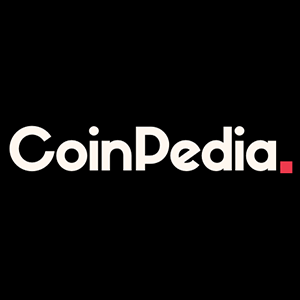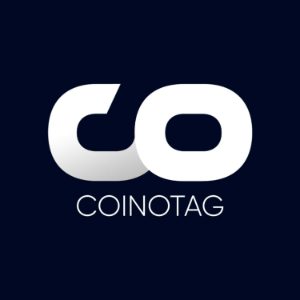Proof-of-Woof: DAIKO’s Smart Leash Makes Dog Poop the Next Frontier of Web3
4 min read
The post Proof-of-Woof: DAIKO’s Smart Leash Makes Dog Poop the Next Frontier of Web3 appeared first on Coinpedia Fintech News Urban sidewalks are full of contradictions from designer athleisure to artisanal coffee, with the more chic owners swinging bags of dog poop. Daiko , a pet-tech startup, saw in that indignity, not a problem, but a wedge. A perfect entry point for blockchain to finally prove itself in the real world. Their answer? A premium , RFID-equipped retractable leash with a removable waste capsule, that is paired with an app that tracks every step, scoop, and vet visit, converting those data points into on-chain rewards. “The most overlooked daily routine of dog-walking is a perfect foundation for real-world Web3 adoption,” said David Byrne, Founder of Daiko. “It’s physical, repetitive, emotional and the behavior’s already there.” The company has already built a community of over 30,000, with a large number of signups to its beta, even though retail units won’t ship until the end of 2025. If the idea sounds ridiculous, remember that fitness trackers were mocked until they proved people would pay to gamify walking. The only difference here is that the gamification ends with a haptic buzz and a crypto-backed micro-deposit, rather than a celebratory badge. “ We’re not asking people to change their behavior, we’re just rewarding what they already do with something that holds real value,” Byrne said. In a sector that has long been criticized for being all code and no concrete, attaching tokens to an in-hand device (even one designed to store dog poop) could be the first truly tangible daily consumer use case for Web3. Tokenomics with real teeth Move-to-earn experiments like StepN imploded through the years because token supply outpaced real-world demand. While insiders cashed out, newcomers were left holding a rapidly deflating asset. The Irish team is trying to dodge that trap by yoking tokens to product margin. They’ve pledged up to 20% of first-year net profits from leash sales to buy tokens from the open market and recycle them into the token-backed rewards pool. “Hardware sales anchors the whole loop,” Byrne said. “It gives us margin to reward users, caps supply, and makes the tokenomics sustainable without needing constant hype.” Hardware design choices make the loop plausible; engineered for a long life with replaceable modular parts, and a rope tested against 200 kilograms of force, allow premium pricing that can subsidize the on-chain economy- without killing gross margin. Analysts scoff at closed-loop ecosystems, yet Daiko’s addressable base is massive. Over 200 million crypto people worldwide are dog owners, and the global pet care industry is expected to smash $250 billion by the end of 2025. Even capturing 1% of that overlap could give Daiko more active users than most decentralized apps. And while skeptics might shrug at yet another loyalty scheme, Byrne argues there are two good reasons to care. One: the reward is an asset that can be spent on physical pet gear, game perks, or donated to charities through a forthcoming foundation inspired by Muhammad Yunus’s micro-credit model. Two: every data packet created pushes the project deeper into ‘proof-of-care’ territory. Whether it’s distance, frequency of walks, or vaccination dates, that dataset is catnip for insurers, vets, and city planners looking to quantify animal welfare. Why failure still counts as a win With the expectation of delivering the Daiko leash, app, and utility token by year end , the team is set to let real-world behavior rather than white-paper hype decide the outcome. Good Web3 needs more public stress tests conducted outside crypto echo chambers and inside boring, everyday routines. If the project stalls, journalists will gain a forensics lab on how not to fuse hardware margins and tokenomics. If it thrives, every walk, scoop, and vet check-in becomes an on-chain proof that incentives can shape low-stakes, high-frequency habits without spiralling into speculation. Either scenario enriches the conversation around the Markets in Crypto-Assets ( MiCA ) framework, now fully active across Europe and hungry for case studies that straddle physical goods and digital finance. The deeper wager is cultural. Pets are one of the few domains where owners willingly share obsessive data like feeding logs, GPS routes, or even poop consistency. If blockchain can’t add value here, where the emotional stakes are high and the routines relentless, its consumer prospects dim everywhere else. One humble accessory can matter. One daily chore can become a signal for well-being and success. Success would validate the thesis that Web3 is the place that should reward real-world actions, not just a location for meme-stock gambling. Failure is not an option for Daiko, who believe they will introduce dog-owners to a better piece of kit and hand regulators a fresh bunch of intel. Either way, all canines get the care they truly deserve, and owners get the backup they need for their happy-go-lucky pooches. In the march toward mainstream adoption, even a token for picking up poop could end up leading the pack.

Source: coinpedia



